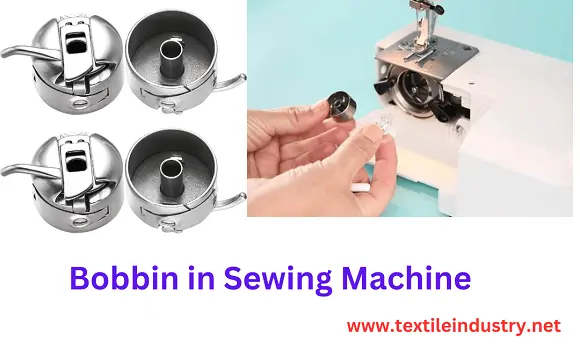There are a lot of different types of sewing machine parts, and it can be a little overwhelming when you’re trying to learn about them all. But don’t worry, we’re going to break it down for you. Here I will discuss Bobbin in the sewing machine.

What is a Bobbin?
Now that you know all the parts of your sewing machine, let’s dig deeper into the most used one – the bobbin. This is a small cylinder or spool of thread that is used to create the lower stitch in your garment. You’ll find it underneath your fabric, at the bottom of your machine.
The bobbin is responsible for looping around and interlacing with the upper thread from the sewing machine needle to create a secure stitch. It also can help add tension to your project by adjusting the size of these loops. To do this, you need to adjust what’s called a bobbin tension knob. This knob determines how much tension will be applied when you sew and it works with both natural and synthetic threads.
Once you have mastered proper bobbin tension, you will be able to create consistent stitches that have just enough give for a perfect finish on every project!
Selecting the Right Bobbin and Thread for Sewing Machine
When getting ready to begin your sewing project, it’s important to make sure you have the right bobbin and thread. The bobbin is part of the machine that holds the thread and is responsible for creating even, smooth stitches. You’ll want to make sure you pick a bobbin that’s compatible with your machine, which you can find in your sewing machine manual or at your local fabric store.
Once you’ve got the right bobbin, it’s time to pick out a thread. I’d suggest going for an all-purpose thread that comes in a range of colors. That way, you don’t have to run around looking for different colors if you’re making something like curtains or a quilt. Just make sure to pick out a stronger thread if you’re making something like an upholstery project!
And finally, it’s important to choose the right tension when doing any type of sewing project. This will ensure that the stitches are tight enough for whatever item you’re sewing but not too tight, so they don’t break easily.
